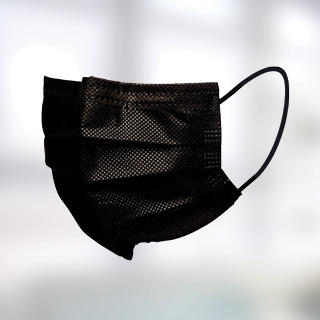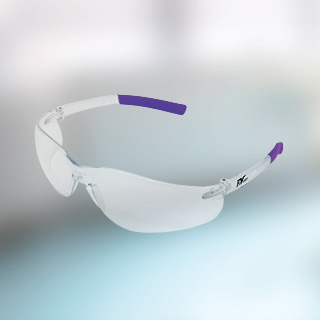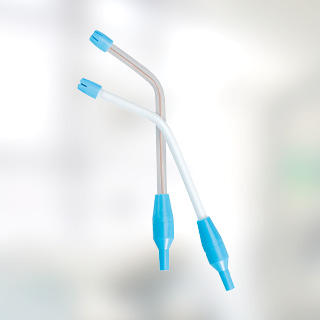Blog
Alleviating Patient Concerns About Dental Office Safety

ENSURING COMPREHENSIVE SAFETY IN DENTAL PRACTICES
As fall and winter approach, practices should review and adapt protocols in preparation for flu and respiratory illness season, and any uptick in COVID cases. It’s important to note that the Centers for Disease Control and Prevention (CDC) now aggregates and reports COVID-related hospitalizations instead of COVID transmissions, making it a lagging indicator.
By the time a dental practice is alerted to a COVID outbreak in their area, transmissions could already be at concerning levels. This is why it’s important to continue screening protocols, especially not treating patients who have cold, flu, or COVID symptoms, unless in an emergency.
Another factor to consider is patient concerns.
Patients Want to Know They’re Safe
An article in the July 2023 issue of DentistryIQ entitled “Dear Patient: Is your dental office safe?” highlights the fact that patients also have concerns about their safety at the dentist’s office. They need to be comfortable with every step your office takes to ensure their wellbeing. If they don’t trust your practice, they might find another one.

Be prepared to answer commonly asked questions:
- What steps does your office take to prevent infection and transmission?
- Are office staff allowed to work if they’re sick?
- What happens to instruments after they’ve been used?
- Which surfaces are wiped down, and with what type of disinfectant?
Make sure to revisit your protocols regarding masks, particularly during flu season (October through April) and/or if there is a rash of RSV or COVID cases. You may want to use higher levels of protection (e.g., respirators during aerosol-generating procedures), and consider asking staff and/or patients to wear surgical masks during this time.
Make sure patients know before they visit your practice if they’re expected to wear a mask and possibly have them available when entering the office.
It may even make sense to clarify patient safety as it pertains to each step in the process, starting with what happens before they visit your practice.
Previsit Preparation
Patients should know that the dental professionals in your office perform a checklist of activities to prevent infection and reduce the risk of contamination.
These activities include:
- Inspecting instruments to ensure they’re dry and inserted into pouches, sealed properly, without creating any no holes or tears.
- Ensuring all items for each patient’s visit are set up properly, based on anticipated care.
- Confirming that instruments are packaged and organized specific to the procedure.
While you won’t necessarily walk them through your reprocessing room, let patients know that instruments are thoroughly cleaned and sterilized before they’re used. Ideally, they are cleaned and disinfected as soon as possible after use. However, if that isn’t possible, point out that your practice has procedures for pretreating instruments until they can be cleaned.
If your practice uses a product like Enzymax® Spray Gel from HuFriedyGroup, inform patients that it’s designed to help break down and remove biological debris so instruments can be cleaned and sterilized properly.
Show Off Your Cassettes
Practices that use cassettes might consider explaining the value of these useful tools to patients:
- Cassette rails keep instruments separated during reprocessing, allowing access to instruments during cleaning and sterilization while protecting them from scratching and breaking.
- Cassettes prevent instruments from sliding out or falling off of instrument trays during transportation. Even if a cassette is dropped, the instruments stay safe.
- Cassettes can be placed directly into presoaking containers and ultrasonic cleaners. And they can be rinsed, dried, wrapped, and sterilized without removing instruments.
- Cassettes help prevent overloading cleaning and sterilization equipment.
Cassette-based Instrument Management System (IMS) options from HuFriedyGroup enable customized setups and improve efficiency. Anxious patients may be relieved to know that cassettes are reported to save dental professionals 5 to 10 minutes per procedure – which means less time in the dental chair.
Exams and Procedures
It may not occur to patients that dental professionals can be exposed to infection when they’re performing procedures. Let patients know how dental professionals in your office prevent potential exposure to themselves and to patients during exams and procedures. These activities include the following measures:
Donning PPE
 Explain why dental professionals wear fluid-resistant isolation gowns and well-fitting masks and even respirators to help protect themselves during certain types of procedures. Point out that dental professionals change their masks and respirators after each patient visit to prevent cross-contamination and avoid potential wicking of pathogens after prolonged use.
Explain why dental professionals wear fluid-resistant isolation gowns and well-fitting masks and even respirators to help protect themselves during certain types of procedures. Point out that dental professionals change their masks and respirators after each patient visit to prevent cross-contamination and avoid potential wicking of pathogens after prolonged use.
Reminder: With flu season and potential COVID cases on the rise, make sure your team is properly donning and doffing PPE between patients for this reason.
Consider investing in PPE like the Crosstex™ Ultra Surgical Masks with Secure Fit™ Technology. These ASTM Level 3 masks are ideal for procedures where heavy to moderate amounts of fluid, spray, and/or aerosols may be produced. Their patented nose and chin strips allow clinicians to minimize gapping, providing superior performance to traditional earloop masks.1 2 Available in black, wearers can match the latest color trends while hiding soils and makeup residue.
Practicing Eye Safety
 Proper levels of protection and protocol are essential in maintaining quality oral health care, including eye health. Dental professionals are susceptible to occupational eye hazards in the form of flying debris and projectiles, exposure to bloodborne pathogens, and other potentially infectious materials through splatter, spray, splashes, exposure to aerosols and chemicals, and nonionizing radiation. Eye injury is one of the most common occupational hazards experienced by dental health care professionals. In fact, the American Academy of Ophthalmology has found that 90% of the 2,000 daily on-the-job eye injuries can be avoided with the proper eye protection.
Proper levels of protection and protocol are essential in maintaining quality oral health care, including eye health. Dental professionals are susceptible to occupational eye hazards in the form of flying debris and projectiles, exposure to bloodborne pathogens, and other potentially infectious materials through splatter, spray, splashes, exposure to aerosols and chemicals, and nonionizing radiation. Eye injury is one of the most common occupational hazards experienced by dental health care professionals. In fact, the American Academy of Ophthalmology has found that 90% of the 2,000 daily on-the-job eye injuries can be avoided with the proper eye protection.
One key element for eye health conservation is to comply with the Occupational Safety and Health Administration (OSHA) standards and CDC guidelines to promote safe work environments. All dental professionals are dedicated to patient and staff safety and using protective eyewear, periodically reviewing workplace protocols, conducting ongoing training, and continually assessing any obstacle to compliance can reduce or eliminate eye injury risks in the dental health care setting.
Practices are held to a high level of accountability, therefore it’s critical for dental professionals to communicate the importance of eye protection to their patients. Here are some tips to use in that conversation:
- Take time to educate your patients: Patients should be aware that dental treatment creates spray and spatter, and the use of numerous instruments throughout can also pose ocular risk.
- Explain to patients the rationale for wearing protective eyewear during dental treatment. When patients understand, they are more likely to comply.
Eyewear should not be presented as an option for the patient, but a necessary part of dental treatment.
HuFriedyGroup offers a line of safety eyewear for dental professionals and patients from Palmero Healthcare that meets protection requirements for eye safety. The ProVision™ collection consists of wraparound safety glasses, goggles, bonding, laser, magnification, bifocals, pediatric patient styles, as well as disposable safety eyewear and face shields.
Dental teams can’t take risks with their – or their patients’ – vision. Which is why -the HuFriedyGroup portfolio of products offers a collection of safety eyewear that meets protection requirements for eye and face safety devices.
Reducing Cross-Contamination
Studies have shown that dental bib clips and chains have been shown to pick up dangerous microorganisms from skin, saliva, and plaque, presenting a potential source of cross-contamination in the dental operatory. Whether your office uses disposable bib clips or bib chains that are wiped with an EPA-approved, intermediate-level disinfectant between patient appointments, reassure patients of their safety.
Consider using Crosstex Sani-Tab Patient Towels, which feature adhesive tabs and eliminate the need for bib chains and clips altogether. This maximizes infection control and patient comfort while saving time and money.
Preventing Backflow
Most likely, your patients will not know what backflow is unless you talk about it. As it turns out, some of your staff may not be as aware as they could be. A recent poll of dental professionals found that more than 50% are not using or are unaware of what a backflow device is, and over 34% report that their dental practices don’t use backflow devices during patient treatment.
Studies show that backflow can occur 21% of the time (1 out of every 5 patients). As a result, the CDC recommends that “dental health care personnel should not advise patients to close their lips tightly around the tip of the saliva ejector to evacuate oral fluids.”
Your dental professionals can protect patients and help prevent backflow by:
- Reminding patients not to close their mouths around the saliva ejector.
- Holding the evacuation line parallel to the patient’s mouth instead of above their mouth.
- Choosing products that prevent the changes in vacuum pressure that can cause backflow.

HuFriedyGroup Safe-Flo™ Saliva Ejectors and Valves are specifically designed to stop backflow and protect patients by preventing potential cross-contamination risk. These single-use disposable saliva ejectors and valves (compatible with properly maintained saliva ejector screens) prevent backflow while eliminating the chore of dismantling/disinfecting valves and ensuring patient safety.
- The Safe-Flo™ Saliva Ejector is a fully assembled, all-in-one saliva ejector with an attached Safe-Flo Valve.
- The Safe-Flo™ SE Valve is a backflow valve that can be used with your preferred saliva ejector brand.
- The Safe-Flo™ HV Valve prevents backflow and can be used with your favorite brand of HVE tips to prevent backflow in HVE lines.
- The Safe-Flo™ Adapter provides backflow prevention and allows users the ability to use their preferred brand of saliva ejectors on an HVE line, providing the saliva ejector with a higher level of aspiration.
 Maintaining waterlines
Maintaining waterlines
Another important step in protecting patients that you may want to communicate is the procedures your office follows to maintain waterlines. Given that any type of outbreak linked to contaminated waterlines would make national news, your patients will most likely take comfort in the fact your office takes steps to prevent that from happening.
Both the CDC and the American Dental Association (ADA) are clear that water in every Dental Unit Waterline (DUWL) should demonstrate less than or equal to 500 colony-forming units of bacteria per milliliter (CFU/mL). The 2003 CDC Guidelines for Infection Control in Dental Health Care Settings also states that "removal or inactivation of dental waterline biofilms requires use of chemical germicides." Dental professionals must regularly practice waterline maintenance protocols to include preparation, implementation, and continuation measures. And let your patients know that you are using a germicidal treatment product to help your practice adhere to CDC and ADA guidelines.
Reminder: Make sure that the DUWL maintenance procedures are documented and followed in your office. Here is a quick summary:
Preparation
Based on guidance provided by the equipment manufacturer, the DUWL treatment manufacturer, or OSAP guidance, set a regular testing interval. Make sure that dental office staff has researched and selected the right products.
Implementation
Test DUWLs to ensure that counts meet the current potable water standard (≤500 CFU/mL). HuFriedyGroup offers three options for dental offices to choose from:
- In-Office Paddle Testing, which offers pass/fail results to determine if an operatory should be closed for waterline treatment.
- Mail-In Lab Testing, which offers the most precise test results but requires a longer wait time.
- 24-Hour In-Office Waterline Testing, which is a considerably more accurate in-office waterline test and can lead to the faster opening of an operatory.
Shock failed waterlines to quickly bring down high CFU levels and utilize a waterline maintenance treatment on all DUWLs to increase safety.
Continuation
Always document maintenance, test results, remediation, and training in a log. Make sure that dental office staff who are responsible for waterline testing and treatment continue to receive training on protocols using a set schedule.
Patients also benefit from learning how your office closes the loop on infection prevention with post-procedure safety measures.
Post-Procedure
Let patients know that hygienists and other dental professionals clean and disinfect the operatory after each visit, wiping down all surfaces using hospital-grade, EPA-registered disinfectants that are effective against viruses, bacterium, and fungi.
Reminder: The products you use should meet a minimum number of qualifications, including:
- Environmental Protection Agency (EPA) registration number
- Identified as a Tuberculocidal disinfectant
- Usable on a range of surfaces and in several conditions
- Has cleaning and disinfecting properties
- Has low allergenicity
- Has clear, easy-to-follow IFUs
- Requires a reasonable contact time
HuFriedyGroup offers two surface disinfectant products: AdvantaClear™ and DisCide® ULTRA. Both are designed to clean and disinfect dental surfaces while working extremely fast and effectively to kill a broad spectrum of disease-causing microorganisms, including Tuberculosis.
They clean and disinfect and are available in wipes and ready-to-use liquids. DisCide ULTRA has a contact time of one minute and is effective against Tuberculosis, viruses (HBV, HCV, RSV, HIV-1), bacteria (MRSA, VRE, E. coli), and fungi (C. albicans). AdvantaClear™ has a contact time of two minutes for Tuberculosis and one minute for SARS-CoV-2 and Mpox (Monkeypox). The products are compatible with multiple surfaces, including aluminum, brass, copper, stainless steel, chrome, and most plastics.
Surface disinfection constitutes a major component of an effective infection prevention program to promote safety and cross-contamination protection in the workplace. You can always refer to the disinfectant’s product label to understand basic criteria applicable for its appropriate use including antimicrobial kill claims, contact time, toxicity signals and instructions for use.
Patient Safety Communication Channels
Patients won’t be able to remember everything you share with them in a conversation. However, there are a number of ways to communicate the steps your office takes to ensure their safety.
Website Content
Consider dedicating a page on your website to patient and dental professional safety measures. Include all of the safety measures organized in a way that’s easy to read and reference. Also consider displaying important reminders about masking on your home page so patients are informed before they visit your office.
Intake Paperwork
Your intake paperwork should have information about patient safety and the measures your office takes to prevent infection. Allow patients to take it with them or use QR technology linked to a webpage so they can reference that information at any time.
Posters and Displays
By placing posters with infographics highlighting your safety measures, patients can read the information and/or ask questions that can inspire product conversations. If your office utilizes video displays in your waiting room or operatories, make use of them for this information as well.
Staff Training
Finally, dedicate staff training time to ensure that the dental professionals and front office staff are informed and able to answer patient questions about infection prevention and safety protocols. The more information your team has to address patient concerns, the more likely you’ll have happier, more loyal patients.
1 2018. Reducing Leakage of Surgical Masks/J. Samuel, G.C. Smaldone, Stony Brook Medicine [Poster], ATS 2018, May 21, 2018, San Diego, CA.
2 Patel RB, Skaria SD, Mansour MM, Smaldone GC. Respiratory source control using a surgical mask: An in vitro study (published correction appears in J Occup Environ Hyg. 2022 Jun;19(6):409]. J Occup Environ Hyg. 2016;13(7):569-576. doi:10.1080/15459624.2015.1043050

